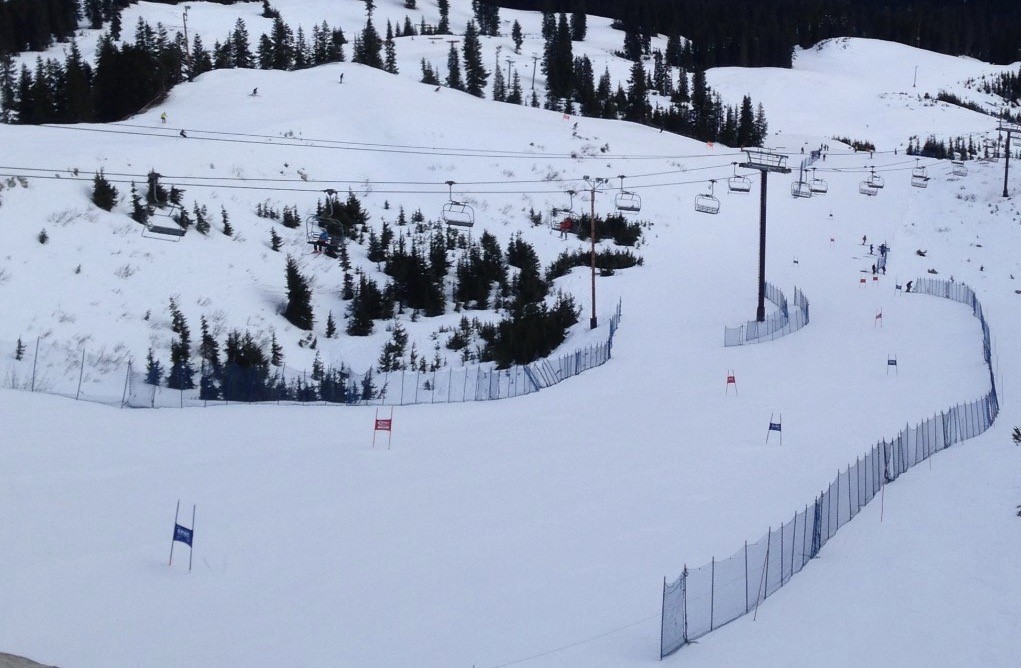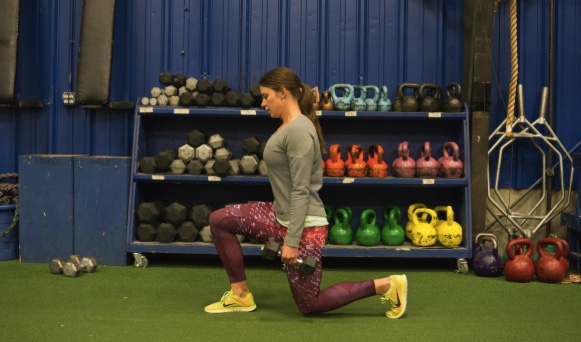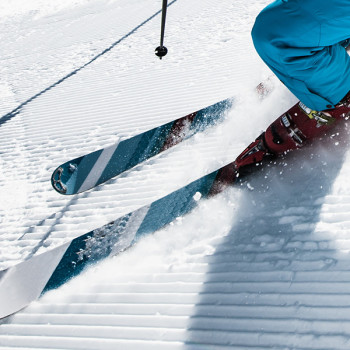
Connecting Dry land Training to On-Mountain Training: Finding Speed in Everything You Do
Connecting Dryland Training to On-Mountain Training
By Lindsay Ahmann (St. Lawrence University Alpine Ski Team)

Elite athletes talk a lot about the training they do in pre-season, out of season, or even fitness and conditioning activities; but does all of that training definitely improve specific outcome in their sport when it matters most? For instance, does an alpine skier ski faster during races due to the work she puts in in the weight room? It depends on the purposefulness with which the athlete does all of that dryland work. Sometimes there is a disconnect in how these two seemingly separate parts of an athlete’s work best come together. In which case you could make the argument that simply moving weights around in the gym isn’t really all that beneficial. Rather, moving those weights around while thinking specifically as to why each particular weight training movement would benefit a skier while on the hill, is way more valuable. The common thread connecting Dry land training with On-Mountain training could easily fall under the banner of mental training. How you may ask? The role our off-season training serves is to prepare us to functionally be able to handle our on-snow activities in early season training. Additionally, in-season dryland training also serves as a connector to our on-hill work, if we purposefully engage in it that way. Dry land training for skiing doesn’t necessarily connect like other sports do; we do not have the capability to train in the gym exactly like we do on snow, leaving us to connect the hard work in the gym to our skiing via a structured mental training approach.
In a previous article written for Thrive, we focused on intentional dryland training and the quality vs. quantity mentality during these sessions, which is further stressed during the transition onto snow. As a D1 Alpine Skier, I spend the fall training with intention day-in and day-out, anxiously waiting for the first snowfall and our pre-season training camp at Golden Peak in Vail, Colorado. As a student-athlete school consumes a lot of my schedule, making it very important I use purposeful choices every time I enter gym training that much more important. Thrive uses The 9 Mental Skills of Successful Athletes Assessment to better assess and understand a skier’s mental training strengths and areas of need. Those results for me showed two of the nine skills as being key during this gym time as being vital to connect dry land training to my on the hill work as a skier. Two of the biggest mental training techniques in order to put my gym and dry land training to effective use on snow are goal setting and imagery.

Goal setting has probably been something most skiers have done since the beginning of their athletic careers, so that the coaches would know what you wanted to get out of your season. However, as we get older, goal-setting strategy tends to shift to a more self-directed practice, rather than basic skill acquisition, requiring much more personal accountability, intention and detail. A way that this can be integrated into training is setting process goals in order to reach your outcome goals. For example: working to improve weighting and then exploding off the downhill ski at the conclusion of turn could be best facilitated through many different single leg lunge work and other single leg plyometric training movements. So, I might set a goal to do more reps, or use heavier dumbbells in my single leg lunges. Additionally, goal setting might drive our thinking to be super specific along the lines of “I’m going to focus on staying forward through the transition in order to start my next turn earlier” or it could be “I am going to work on pressuring my outside ski throughout the turn, beginning at the apex of the turn”. Through implementing goal-setting strategies into your everyday routine, you will be able to focus on the process by making your gym sets mentally connect to your skill work on skis in order to reach your outcome goals possibly a little quicker.

The second technique that helps athletes during these transition times between dry land training and on hill work is imagery (mental rehearsal) and being able to “train” even when not on the snow. Imagery is a cognitive process that appears to be a fundamental piece to motor learning and performance (Cumming & Williams, 2011). Using this process while returning to snow, or when doing focused work in the weight room is a way for the motor learning to appear in your performance. Being able to picture yourself in your mind’s eye executing skiing techniques you are striving to perfect is a powerful tool to have in our bag of tools to enhance our physical performance when then time comes. The skill of imagery (mental rehearsal) can be implemented at any time during the day, even as you are working in the weight room. Good times are between sets of a movement where you can collect your breath from one set to the next, and mentally rehearse how that lunge set you just did to exhaustion, will benefit your ability to weight your downhill ski throughout the turn as needed. Other examples of imagery consist of anything from picturing the way you’re pressuring the front of your boots through each turn, being quick to pole plant after you block a gate, rolling your ankles, or activating muscles as you return from injury. No matter what you are picturing yourself do, making that mind-body connection can help connect the gym work to your on-hill training.
As the season progresses, and no matter how hard you have trained throughout the spring, summer and fall, it comes down to how you’re able to connect both dry land and on hill training in our mind so each movement you do as a skier helps you find speed. Always be purposeful and find ways through your mental training to transition your physical and mental strength from the gym to the hill. Although the first few runs in gates can be rusty each time out, trust all the hard work that you have put in for all of your training so that you can keep building throughout your competition season with each opportunity you have available; be it in the gym, in your mind, or on the hill.
References
Cumming, J., & Williams, S. (2011). The role of imagery in performance. In S. Murphy (Ed.), Handbook of sport and performance psychology (pp. 213-232) Oxford University Press. doi:10.13140/2.1.3274.5925
- sport in a pandemic: Crisis or opportunity?Chapter 4 - December 4, 2020
- Crafting the Perfect 10: - November 6, 2020
- Sport in a Pandemic:CRISIS OR OPPORTUNITY?Chapter 3 - September 23, 2020


